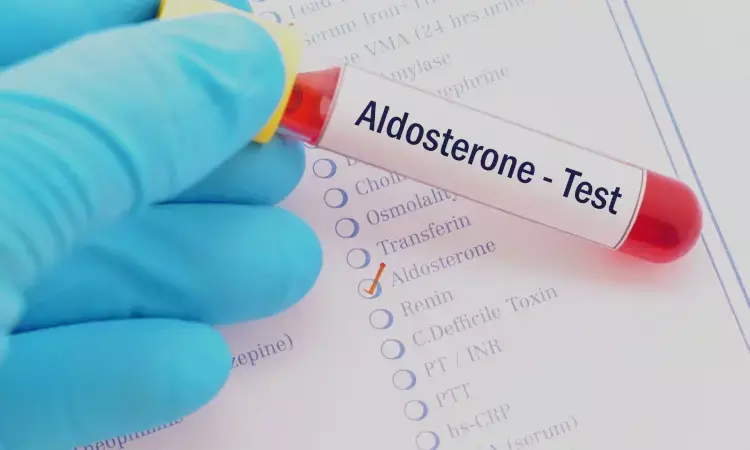- Home
- Medical news & Guidelines
- Anesthesiology
- Cardiology and CTVS
- Critical Care
- Dentistry
- Dermatology
- Diabetes and Endocrinology
- ENT
- Gastroenterology
- Medicine
- Nephrology
- Neurology
- Obstretics-Gynaecology
- Oncology
- Ophthalmology
- Orthopaedics
- Pediatrics-Neonatology
- Psychiatry
- Pulmonology
- Radiology
- Surgery
- Urology
- Laboratory Medicine
- Diet
- Nursing
- Paramedical
- Physiotherapy
- Health news
- Fact Check
- Bone Health Fact Check
- Brain Health Fact Check
- Cancer Related Fact Check
- Child Care Fact Check
- Dental and oral health fact check
- Diabetes and metabolic health fact check
- Diet and Nutrition Fact Check
- Eye and ENT Care Fact Check
- Fitness fact check
- Gut health fact check
- Heart health fact check
- Kidney health fact check
- Medical education fact check
- Men's health fact check
- Respiratory fact check
- Skin and hair care fact check
- Vaccine and Immunization fact check
- Women's health fact check
- AYUSH
- State News
- Andaman and Nicobar Islands
- Andhra Pradesh
- Arunachal Pradesh
- Assam
- Bihar
- Chandigarh
- Chattisgarh
- Dadra and Nagar Haveli
- Daman and Diu
- Delhi
- Goa
- Gujarat
- Haryana
- Himachal Pradesh
- Jammu & Kashmir
- Jharkhand
- Karnataka
- Kerala
- Ladakh
- Lakshadweep
- Madhya Pradesh
- Maharashtra
- Manipur
- Meghalaya
- Mizoram
- Nagaland
- Odisha
- Puducherry
- Punjab
- Rajasthan
- Sikkim
- Tamil Nadu
- Telangana
- Tripura
- Uttar Pradesh
- Uttrakhand
- West Bengal
- Medical Education
- Industry
Suppressed Renin Activity Outperforms Aldosterone-to-Renin Ratio in Identifying Primary Aldosteronism: Study

USA: Recent research has examined the effectiveness of two screening tests for primary aldosteronism (PA): the aldosterone-to-renin ratio (ARR) and the suppressed plasma renin activity (PRA). Primary aldosteronism, a condition characterized by excessive aldosterone production, can lead to hypertension and cardiovascular complications. Accurate and early diagnosis is crucial for effective management and treatment.
The findings, published in the Hypertension Journal, suggest that plasma renin activity alone may be a more sensitive approach for primary hyperaldosteronism screening than the aldosterone-to-renin ratio.
"In this retrospective study of 94,829 patients with suspected primary hyperaldosteronism, an ARR of 20 or higher identified 20.3% of patients with the condition. In contrast, a suppressed plasma renin activity of less than 1 ng/mL per minute was detected in 45.9% of patients with primary hyperaldosteronism," the researchers reported.
ARR, a widely used test, measures the ratio of aldosterone to renin in the blood. A high ARR suggests the presence of PA, prompting further diagnostic testing. Conversely, suppressed PRA refers to measuring low plasma renin levels in the context of high aldosterone levels, which can also indicate PA.
In many clinical settings, primary aldosteronism screening typically involves a single blood draw to measure plasma aldosterone concentration (PAC) and plasma renin activity, which is then used to calculate the aldosterone-to-renin ratio. However, ARR levels can vary between specialized centers and even with repeated tests in the same individual, highlighting the potential inconsistency of this screening method. As an alternative, a suppressed PRA, defined as less than 1 ng/mL per hour, has been proposed as a potential screening test.
Against the above background, Marco Marcelli, Quest Diagnostics Nichols Institute, San Juan Capistrano, CA, and colleagues aimed to compare two potential screening methods for identifying probable primary aldosteronism in a cohort of 94,829 paired PRA and plasma aldosterone concentration samples. The approaches evaluated were an ARR threshold of ≥30 or ≥20 versus a PRA suppressed to below 1 ng/mL per hour.
The study revealed the following findings:
- Of 94,829 patients, 20.3% tested positive based on ARR≥20, 13.9% based on ARR≥30, versus 45.9% based on suppressed PRA (<1 ng/mL per minute).
- In the PRA group, a range of aldosterone levels were observed: 5.5% had PAC >15 ng/dL, 25.2% had PAC 5 to 15 ng/dL, and 15.2% had PAC <5 ng/dL, compared with 6%, 12.7%, and 1.6% in the ARR≥20 group and 4.7%, 8.5%, and 0.7% in the ARR≥30 groups.
"In this cohort being screened for primary aldosteronism, significantly more individuals were identified using criteria based on suppressed renin activity compared to those identified with the aldosterone-to-renin ratio," the researchers concluded.
Reference:
Marcelli M, Bi C, Funder JW, McPhaul MJ. Comparing ARR Versus Suppressed PRA as Screening Tests for Primary Aldosteronism. Hypertension. 2024 Jul 23. doi: 10.1161/HYPERTENSIONAHA.124.22884. Epub ahead of print. PMID: 39041222.
Dr Kamal Kant Kohli-MBBS, DTCD- a chest specialist with more than 30 years of practice and a flair for writing clinical articles, Dr Kamal Kant Kohli joined Medical Dialogues as a Chief Editor of Medical News. Besides writing articles, as an editor, he proofreads and verifies all the medical content published on Medical Dialogues including those coming from journals, studies,medical conferences,guidelines etc. Email: drkohli@medicaldialogues.in. Contact no. 011-43720751


